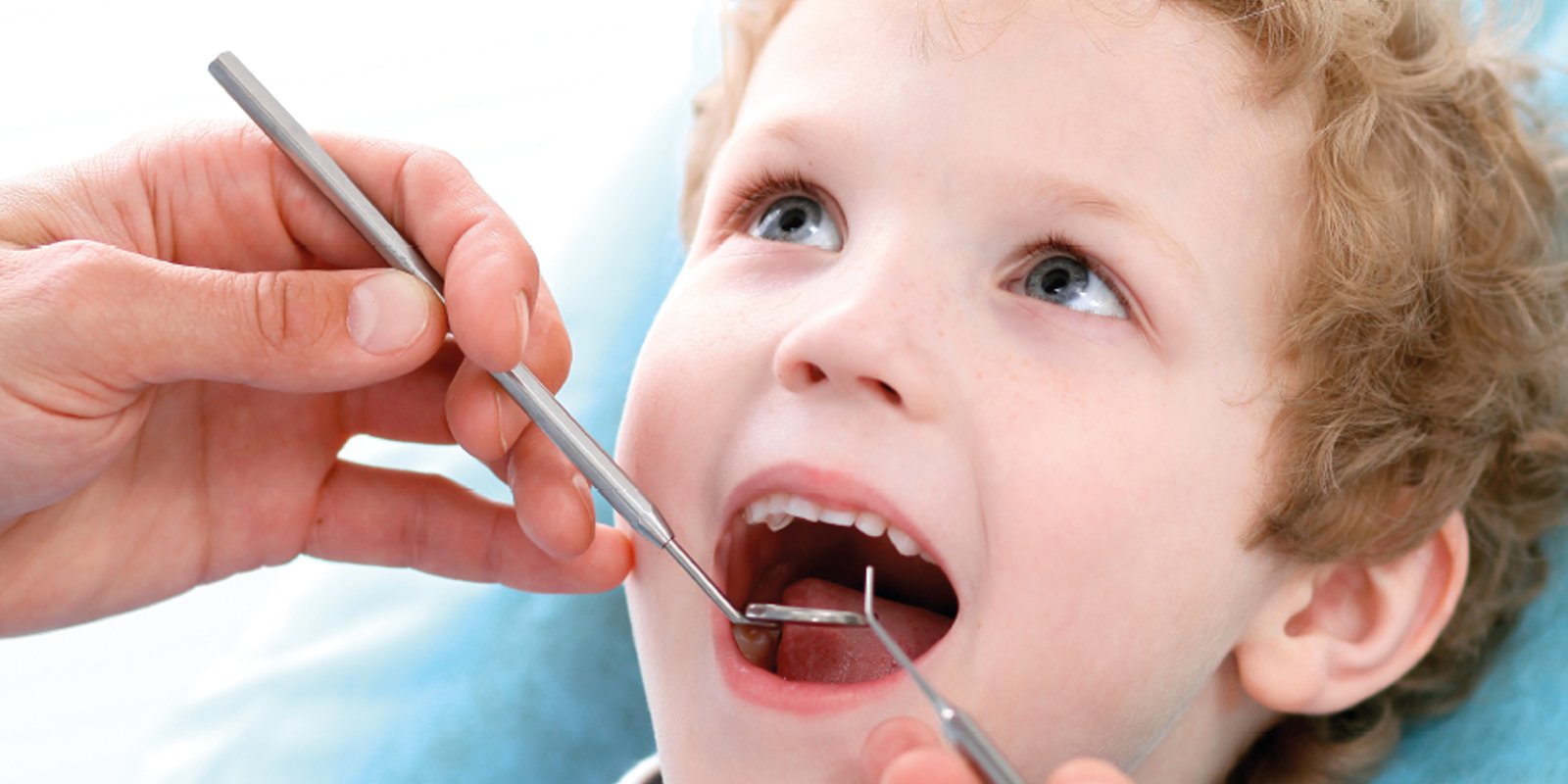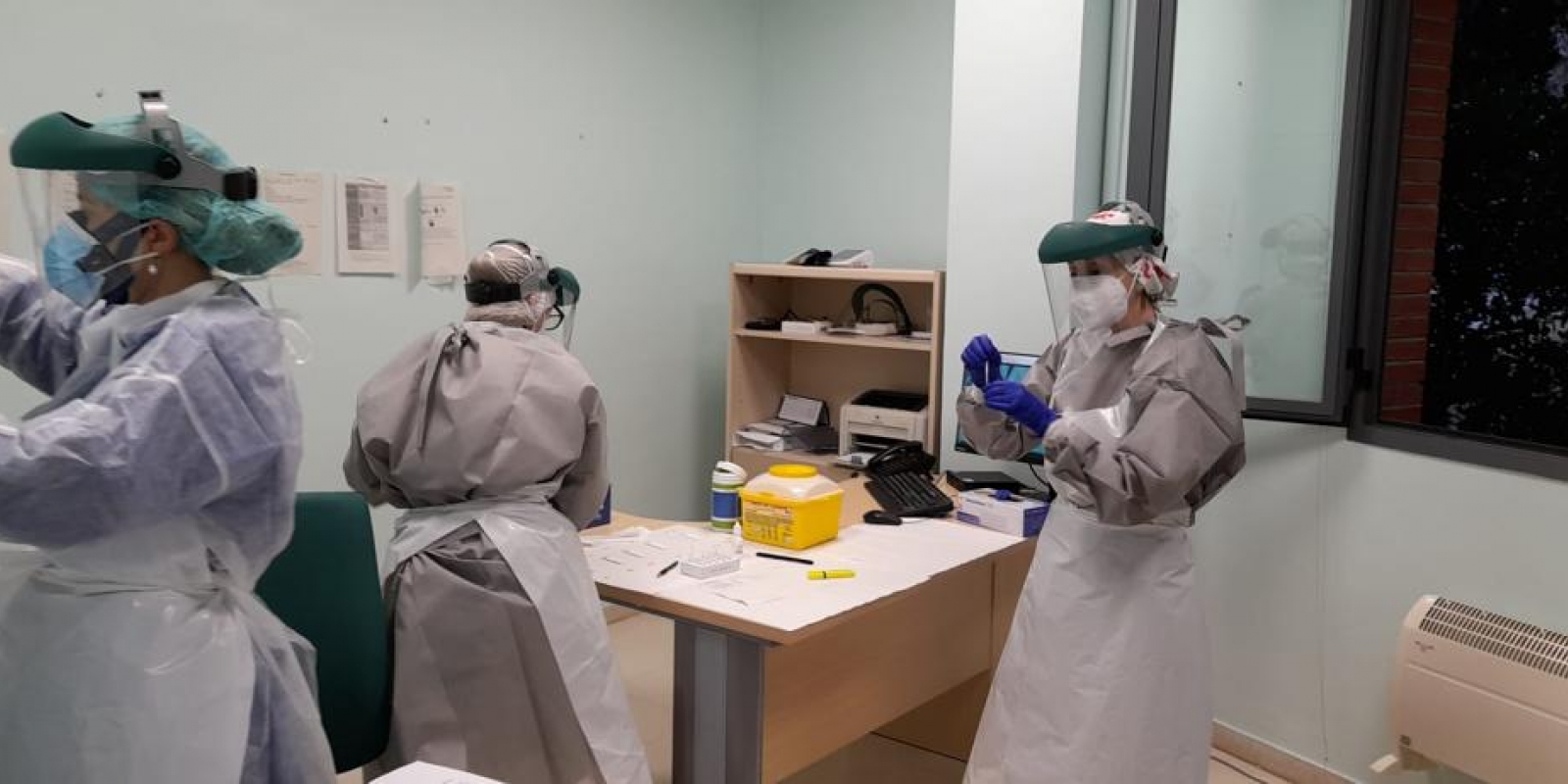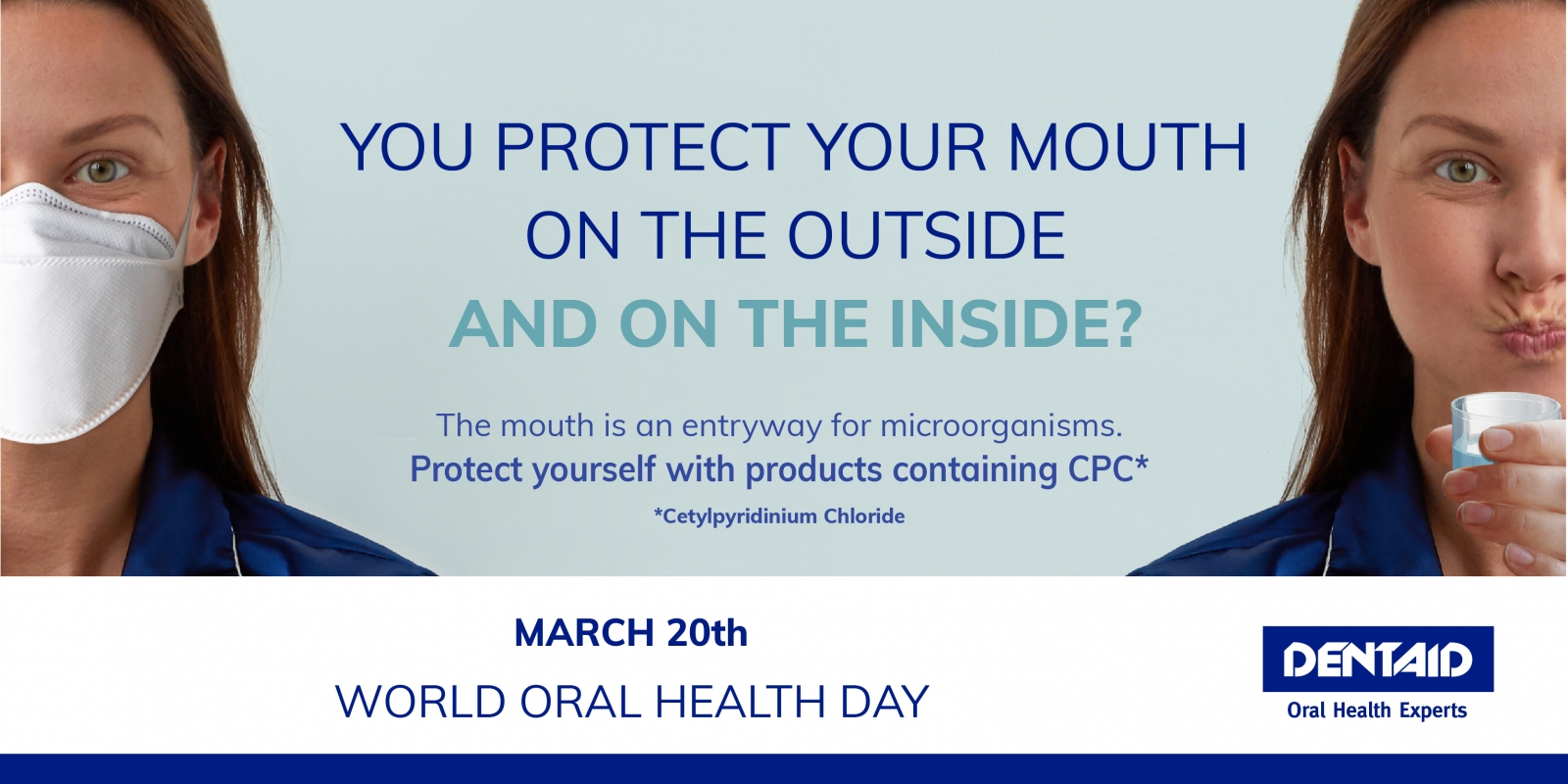DENTAID EXPERTISE
News for dentistry professionals
HOW TO KEEP GOOD ORAL HEALTH DURING CHILDHOOD

Having good oral health throughout the different stages of life is one of the most important aspects of one’s quality of life. One of the key stages is, without doubt, childhood. Here we present the guidelines for proper oral hygiene in children, so they can achieve optimum oral health.
The development of the oral cavity and of primary dentition begins even before birth and it is during the first months of life when the eruption of baby teeth occurs.
Concerning teething, the following stages can be defined, though these may vary in time depending on the individual:
• From birth to age 2: eruption of the temporary teeth, also known as baby or deciduous teeth takes place.
• From ages 2 to 6: children now have all primary teeth and no further tooth eruption occurs. They are at the primary dentition stage.
• From ages 6 to 12: the stage of mixed dentition is reached, since eruption of the permanent teeth begins while they coexist with the primary teeth.
• Age 12 and over: by now, children have their permanent dentition.
Whether wisdom teeth erupt or not, this will in any case take place after age 18. Although they are eventually replaced by permanent teeth, deciduous teeth are involved in very important functions during the first years of life, such as chewing and of the development of the jaw, speech, and even aesthetics. Premature loss of baby teeth may affect the alignment of permanent teeth, as they serve as a guide for eruption. If a primary tooth is lost prematurely, there is the risk that the adjacent teeth may move into the free space, hindering the subsequent eruption of the permanent teeth and causing crowding and/or malpositioning. In addition, it may increase the interdental space, where most bacterial plaque builds up.
For all these reasons, it is very important to keep both primary and permanent teeth in good health. To ensure dental health, performing oral hygiene adapted to the needs at each age is very important, since each stage requires specific care. But all share a common goal: the removal of dental biofilm.
The build up of dental biofilm can cause the onset of the two most common oral diseases in children: tooth decay and gingivitis.
TOOTH DECAY
Tooth decay (caries) is the main cause of tooth loss in children. It involves localised destruction of hard dental tissues as a consequence of the acids produced by bacteria in the biofilm when these metabolise carbohydrates in the diet. When this process is repeated constantly over time, cavitation occurs. Initially, localised destruction of the enamel takes place and, once it reaches the dentin, it extends, potentially affecting the pulp.
In Spain, the prevalence of caries in primary teeth in children at age six is 31.5%, and continues to grow to almost 100% in adults.
It is worth mentioning that early childhood caries—formerly known as baby bottle tooth decay—affects children of up to 71 months of age. Early childhood caries is the most common chronic disease to occur during childhood.
The progression of early childhood caries is swift in primary teeth, as the enamel is thinner than that of permanent teeth. In addition, children with tooth decay in their primary teeth are at much greater risk of having multiple caries in their permanent teeth.
The main risk factors are the bacteria that cause tooth decay, inadequate oral hygiene and a diet rich in sugars. Therefore, to reduce the risk of caries, the following measures must be taken:
• Fight bacterial build-up: proper removal of biofilm through effective brushing techniques.
• Avoid early transmission of bacteria: do not blow on food to cool it, do not taste food with the child's silverware, do not put their pacifiers in your mouth, etc.
• Limit sugars (substrate): reduce sugar consumption and maintain proper oral hygiene. The simplest [carbohydrates] are more likely to cause decay than complex ones, such as starch. You also have to take into account the quantity and, above all, the frequency of intake; the more often, the greater the risk of decay.
GINGIVITIS
Healthy gums should look pink—not red—and show no signs of inflammation or bleeding.
Gingivitis is an infectious-inflammatory disease that causes redness, inflammation and bleeding of the gums. In Spain, only 48.2% of children at the age of 12 years have healthy gums, and this percentage drops even further in adolescence.
It is mainly produced by the accumulation of biofilm, or bacterial plaque, in the margin between the gum and the tooth, especially in the interdental space. This build up of biofilm induces a local inflammatory response with redness and bleeding of the gums, the principal signs of gingivitis. It may in very few cases evolve into periodontitis—though very rarely in children—which would soon mean the destruction of the supporting tissues of the teeth and could therefore cause tooth loss in the long-term.
The main measure for prevention consists of maintaining good oral hygiene to prevent the build up of biofilm, along with check-ups at the dental clinic.
In order to remove bacterial plaque and stop it from building up, dental and interproximal hygiene must be performed daily. However, after some time, any bacterial plaque that has not been removed may turn into dental calculus or tartar. Calculus is mineralised bacterial plaque, which can no longer be removed with regular dental hygiene and must be taken off at the dental clinic by professional dental prophylaxis.
RECOMMENDATIONS FOR ORAL HYGIENE AT DIFFERENT STAGES
Oral hygiene recommendations should be aimed at preventing the two main oral diseases that occur in children: tooth decay and gingivitis.
0-2 years: eruption of deciduous teeth
The eruption process usually begins at six months of age and ends around the age of two. Deciduous dentition consists of a total of 20 baby teeth, five per each quadrant of the mouth.
It is advisable to start with oral hygiene even before the first teeth appear. When babies do not have teeth yet, cleaning the gums with a damp piece of gauze or a silicone thimble is recommended after each feeding.
The process of tooth eruption may cause greater restlessness, irritability and difficulty in sleeping. The baby may have increased salivation, minor discomfort, redness and irritation of the gums.
There are balsam gels that are specifically formulated to relieve these discomforts and protect the gums. The balsam gel can be applied with a silicone thimble, or with gauze, by gently massaging the baby's reddened gums.
When the first teeth erupt, recommendations include going to the dentist or paediatric dentist on the one hand, and on the other, brushing the baby’s teeth to prevent biofilm from building up.
Brushing at this age should be done by the parents or the adult caring for the baby. It is recommended to use a baby brush, adapted to the adult's hand and to the baby's mouth, with extra-soft filaments for proper hygiene while respecting the gums and teeth. The gel balsam may be used while brushing.
Going to the paediatric dentist within the first year of life is advisable. The paediatric dentist will check for proper teething and factors such as occlusion or alignment, and will focus on preventing oral disorders or pathologies, including early detection of tooth decay.
In addition to oral hygiene recommendations for the prevention of tooth decay, at this age it is advisable to take into account the following habits:
• Never leave the baby alone with his bottle when it contains liquids other than water, as the accumulation of sugars over long periods favours the onset of decay.
• Avoid dipping the pacifier in sweet substances for the same reason.
• Avoid habits like cleaning the pacifier by sucking it or blowing directly on the baby’s food to cool it, in order to prevent the transmission of cariogenic bacteria through saliva.
Regarding the use of pacifiers, certain studies have shown they may relieve discomfort during teething, and even reduce the risk of sudden infant death. However, it is recommended that their use not go beyond the age of three so as to avoid negative effects on the child’s bite. This goes for thumb sucking as well, to avoid malformations in the oral cavity.
2-6 years: Deciduous dentition and picking up good oral hygiene habits
At this age, children already have all their baby teeth and it is advisable they start taking responsibility for their oral hygiene and understanding the need for it. The most important thing is thus to pick up the habit.
Children are recommended to begin brushing on their own, at least twice a day - morning and especially evening - or preferably after meals, and to try brushing for at least two minutes. To help get the habit, there are handy ideas, such as parents brushing at the same time as the child, and a number of resources including applications, games, songs, etc.
For best brushing, the toothbrush must be adapted to the child's hand and mouth, with a very small head that will reach all areas of the mouth, and with soft filaments that respect teeth and gums. The brush must also be manageable by the parents, who will have to go over the daily brushing of the child, since it is necessary to bear in mind that the child will probably not be effective at properly removing the biofilm. Plaque revealers can be used to help improve brushing technique.
In order to prevent tooth decay—the main oral pathology at this age—the use of a tooth gel with a fluoride concentration adapted to the child's age is recommended during brushing. According to the guidelines of the European Academy of Paediatric Dentistry (EAPD) and the Spanish Society of Paediatric Dentistry (SEOP), the recommended fluoride concentration after two years of age is 1,000 ppm of fluoride ion. The estimated amount of fluoride gel used would be about the size of a pea. Parents should make sure that the child spits out the gel after brushing and that it is not swallowed.
From age 6: eruption of permanent teeth
At this age, the eruption of the permanent teeth begins in a process that ends at around the age of 12 with the eruption of the second molars. During this stage, children have mixed dentition, since the deciduous teeth coexist with the permanent teeth.
The entire permanent dentition is made up of 32 teeth, eight in each quadrant of the mouth, including the third molars or wisdom teeth, which may or may not erupt after 18 years of age. As the teeth erupt, interceptive orthodontic treatment may be required to correct problems of occlusion, tooth alignment, etc. Use of fixed orthodontics usually begins in children who have all their permanent teeth, at around the age of 12.
The main pathology at this age is still decay, but in addition, inflammation of the gums may occur due to the eruption of the permanent dentition. Using a brush suited for a child is recommended. This should have a small head with soft filaments and a narrow neck to reach all areas of the mouth. It is advisable to use a tooth gel with increased fluoride concentration.
The EAPD and the SEOP recommend the use of a concentration of 1,450 ppm fluorine ion, and the size to be used would be 1-2 cm, as in adults, since all the teeth have already formed even if they have not yet erupted. During the eruption of the permanent teeth there may also be some discomfort or irritation in the gums, so it would be advisable for the composition of the tooth gel to include specific ingredients for the protection of the gums. In addition, to promote the regeneration of gums during tooth eruption, the use of a gel that includes specific components for gum care is recommended.
Brushing should continue to be supervised by parents and reviewed as necessary until approximately 8-9 years of age. It is estimated that children can control swallowing reflex and spitting starting at the age of 6. Therefore, as long as this is the case, the use of a mouthwash can be introduced. In addition to tasting good, mouthwash will provide extra protection against decay thanks to fluoride, favouring gum care and helping to reach all areas in the mouth.
From this age on, and above all, in adolescence, due to hormonal changes and changes in attitude, the build up of biofilm in the interdental area may favour the onset of gingivitis. Therefore, it is advisable to introduce the habit of performing interdental hygiene, either by using dental floss and tapes or interproximal brushes.
It is important to watch that it is done with care and with a proper technique to avoid damage that may also dissuade the child from performing interdental hygiene.
Finally, check-ups by the dentist or paediatric dentist must be performed at least once a year. At this age it is possible to detect incipient carious lesions, established caries that require treatment and the need to apply pit and fissure sealants in areas with high risk of decay.
About the Author
Periodoncista y Medical Advisor de DENTAID
Bibliography
- La salud bucodental en España 2015. Consejo General de Colegios de Dentistas de España; 2016.
- Boj JR, Catalá M, García-Ballesta C, Mendoza A, Planells P. Odontopediatría. La evolución del niño al adulto joven. 1.ª ed. Ripano; 2012.
- Protocolo para el uso del flúor en niños. Documento de consenso de la European Academy of Paediatric Dentistry (EAPD) y de la Sociedad Española de Odontopediatría (SEOP); 2009.
- Wong MC, Clarkson J, Glenny AM, Lo EC, Marinho VC, Tsang BW, Walsh T, Worthington HV. Cochrane reviews on the benefits/risks of fluoride toothpastes. J Dent Res 2011; 90 (5): 573-579.
- Marinho VC, Chong LY, Worthington HV, Walsh T. Fluoride mouthrinses for preventing dental caries in children and adolescents. Cochrane Database Syst Rev 2016; 7: CD002284
RELATED ARTICLES

14 Dec 2021
A recent study shows the efficacy of mouthwashes containing CPC in patients with COVID-19
Investigators from the Aragonese Health Service and the Health Research Institute of Aragon conducted a clinical trial in Primary Care with the aim of…

18 Nov 2021
Laboratory studies prove that CPC in mouthwashes is effective against different variants of SARS-CoV-2 thanks to its mechanism of action
INTRODUCTION The oral cavity is a route of entry, infection and transmission of microorganisms, including the SARS-CoV-2 coronavirus. Several…

16 Mar 2021
World Oral Health Day: What role does the oral cavity play during SARS-CoV-2 infection?
At DENTAID, we want to highlight the important role that oral health plays. Coinciding with World Oral Health Day, we have launched an awareness…
Sign up for the DENTAID Expertise newsletter
Sign up for the newsletter